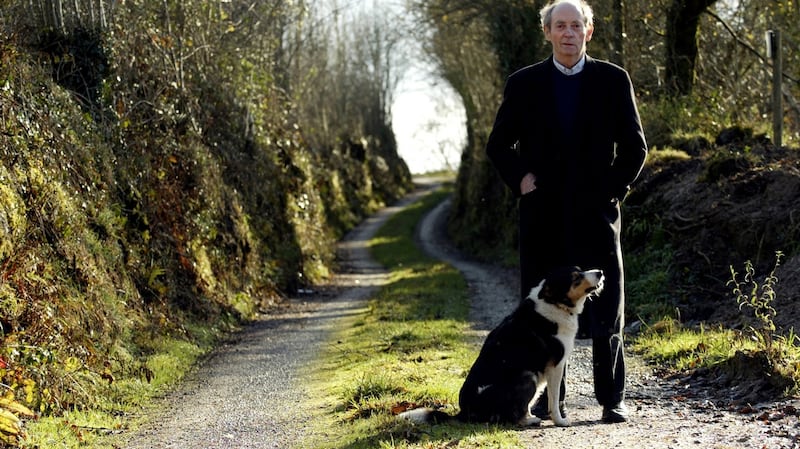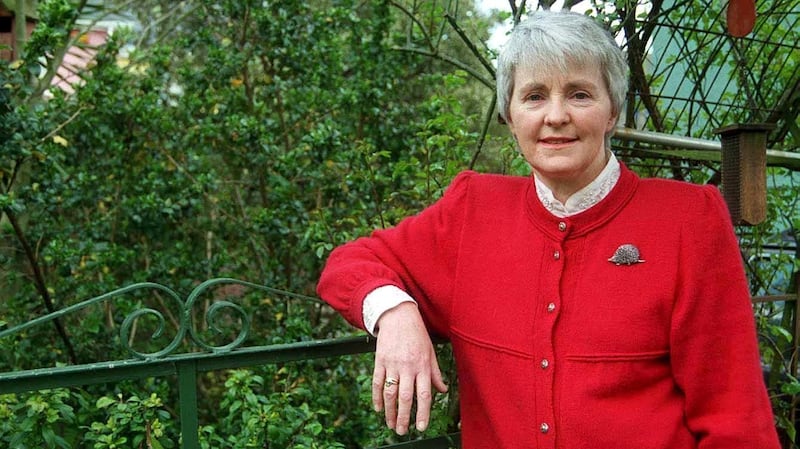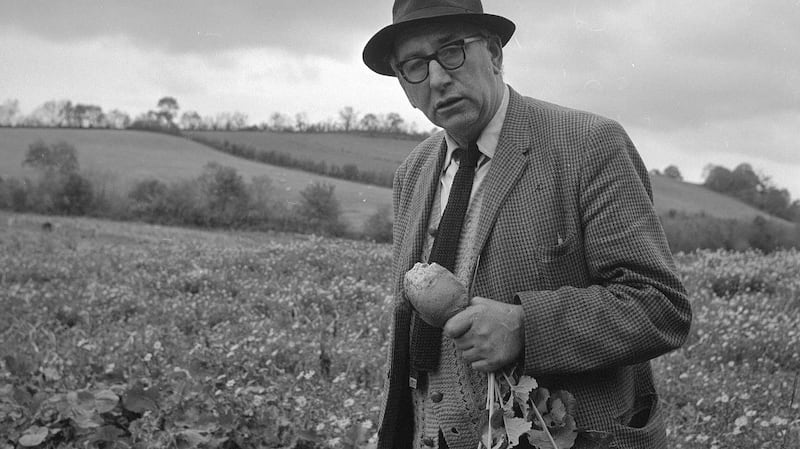I have never enjoyed writing anything as much as this book. I grew up on a farm in Wicklow and, like my father before me, have combined a career as a university teacher of literature with part-time farming. My father, the classicist David Grene, was a Dubliner who developed a passion for farming on summer visits to Tipperary relatives. He and my mother bought a farm in Illinois when they were both teaching at the University of Chicago. And when they decided to move the family to Ireland in 1952, the American farm was traded for the one in Wicklow where I still live, though my father continued to spend half the year working in Chicago. He resisted mechanisation, insisted on using horses rather than tractors on the farm, so even by 1950s Irish standards we must have been considered fairly retro. My farming childhood, therefore, very much belonged to what Seamus Heaney calls the “age of bare hands/and cast iron”, a pre-modern intimacy with land and animals. All those labour-intensive practices – handmilking, thinning turnips, making haycocks, stooking and stacking corn ahead of the big threshing day - were completely familiar. So the Irish literature in which they figure so frequently was home territory for me.

I started out with a notion of writing an essay on the rhythms of farm work in John McGahern. It was only when my wife suggested I do something broader that I realised I had a subject for a book. Because, once you started to look, farm scenes were everywhere in Irish writing: plays and poems, short stories and novels, memoirs and autobiographies. It almost seemed that if you didn’t have an Irish farm childhood, you had to invent one, as Maura Laverty did in Never No More. Her charming first novel, very closely based on her own life features a loving farm grandmother who was a necessary fiction. Research for the book took me to parts of Irish literature I scarcely knew, like Patrick MacGill, Peadar O’Donnell and Seamus Ó Grianna, who all came from the same small area of Donegal. Any time I mentioned what I was working on to friends and colleagues, I was steered towards additional texts. Niall McMonagle said I had to read Tom French’s remarkable long poem Pity the Bastards; Cormac Ó Cuilleanan suggested Kevin Barry’s brilliantly satirical Animal Needs.
Of course, the land figures extensively in 19th-century Irish writing from William Carleton on. But I decided to concentrate on the generations of writers who began to work in the period since 1922. Some of them, like Kavanagh and Heaney, grew up on farms. But others came from a slightly more removed farming background; their experience was of the farms of grandparents, uncles or aunts. (Who would have thought of Anne Enright as having any sort of rural roots before the publication of The Green Road?) The writing and the writers reflect the social, cultural and demographic features of our island. Land ownership was linked to political independence in the decolonising struggles of the late 19th century. The possession of those small family farms, gained with such difficulty, was not going to be lightly relinquished. The farmers in independent Ireland were conservative if every sense of the word, having learned the bitter lessons of the famine period against any subdivision of their land, determined to hand it on intact to a single chosen heir. In what were often large families of children, those who were not so chosen had to find other careers as best they could, often through emigration. There were opportunities, however, in the new State, and many found employment in schoolteaching, the civil service and the Garda. In many cases, it was their children who became writers: Dermot Healy and Thomas Kilroy, for instance, as well as McGahern, were all sons of gardaí.

Writing is largely a middle-class, urban-based occupation but in an Ireland, which for most of the 20th century remained a predominantly agricultural country, writers continued very conscious of the farming environments where they were reared or visited as children. A great deal of modern Irish literature concerned with the farm is retrospective; I wanted to call my book Back on the Farm, but my publishers told me this would baffle the all-important computer search engines. There are idylls of remembered country childhoods like Alice Taylor’s To School through the Fields and its sequels. There are grimly dystopic versions, as in the terrifying stories of Claire Keegan. For many writers, such as Edna O’Brien, the rural environment was one to escape as soon as possible. But for many, the farming experience remains formative, the bedrock of their imagination, to which they must return again and again: John Montague with Tyrone, Bernard O’Donoghue and north Cork. Any over-romanticised view of rural Irish communities is challenged by the subsistence narratives of the Blasket Island autobiographies, the bleak picture of the closed-in parish of John B Keane’s The Field, or the hilariously dark evocation of the talking dead in Máirtín Ó Cadhain’s Cré na Cille. (I have to confess my Irish is nearly non-existent, so I am very grateful for the two translations of this great novel into English.) And an interest in farm writing has not gone away in the 21st century, witness the success in 2018 of John Connell’s The Cow Book.
With such a mass of varied material before me, I had initially no idea how to organise it. It was only gradually that topics for the first five chapters emerged: family and inheritance, the dynamics created by that need for an heir to the farm; life on the poorest land of the west of Ireland seacoast from Donegal to the Blaskets; childhood memories and their varied deployment; the politics of rural communities; and reactions to a modernising Ireland. One thing, though, I knew from the start: my last three chapters would have to be devoted to individual studies of Kavanagh, McGahern and Heaney, the three major writers who made most significant literary capital out of the farming experience. I had never studied any of the three in detail before and the prospect was daunting, particularly in the case of Heaney to whom so much critical attention has now been devoted. But the time spent with them has been hugely rewarding, all the more because I had the opportunity to teach their work to gifted groups of Trinity undergraduates – no better way to shape one’s ideas in dialogue.

Kavanagh’s slow and painful self-creation as a writer, with the minimal resources available to him as a small farmer and cobbler in Monaghan, is a heroic story. Though he was to denounce The Great Hunger as a “sociological lie”, in its devastating evocation of the small farming community, it remains one of the great poems of the 20th century. He could re-tune his farming experience to the bitter recriminations of Stony Grey Soil, the splendid comedy of Tarry Flynn, or the transcendental visions of Iniskeen of the later poetry.
McGahern is one of the relatively few Irish writers to have returned to active farming – Peter Fallon and Eugene McCabe other exceptions. In his fiction, the life of the farm is always there as an alternative to the urban spaces where so many of his characters actually live: representative of a rootedness that has continuous attractions though at the same time filled with memories of the crippling life of home and family on the land.
Heaney is a striking case of the sheer impact of farming memories. He left home for boarding school in Derry at the age of 12; Mossbawn, the family farm on which so many of his poems are focused, was sold when he was 15. And yet right up to the poems of his last collection, Human Chain, those childhood recollections keep coming up new and fresh. From the extraordinarily tactile images of Death of a Naturalist, through his treatment of the Troubles where so often norms of country life afford the peaceful contrast to the war he confronts, to the later work where the people and places of the farm life are ghostly visitants, Heaney’s extraordinary image-making power takes off from that primary central hub of Mossbawn.
The imaginative investment in farming, and the multiple ways in which Irish writers have responded to it through the last century, is what has made it for me such a rich subject. I can only hope that those who read the book will share some of the excitement I had writing it.
Farming in Modern Irish Literature by Nicholas Grene will be published by Oxford University Press on August 5th



















